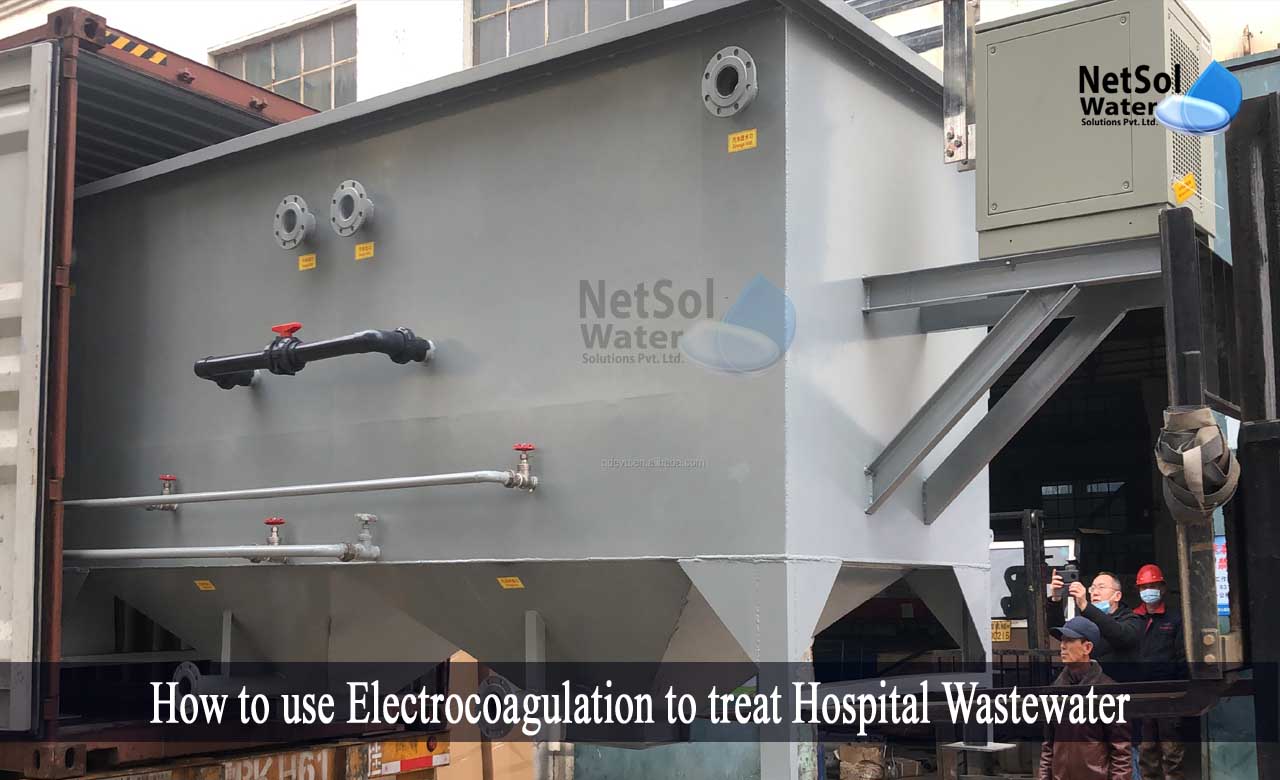How to use Electrocoagulation to treat Hospital Wastewater?
People often visit a hospital to receive treatment from a licenced healthcare professional, when they are ill or injured. A hospital may have a large number of patients at any given moment, suffering from various illnesses. People seek treatment for burns, organ failure, broken limbs, infections, pregnancy, the common cold, the flu, snake bites, alcohol poisoning, drug overdoses, shattered bones, and other ailments!
Treatment of hospital wastewater
Since there are several causes of illness and injury, there are also numerous materials and procedures available for treating them, for example, cancer chemotherapy, antibiotics for infections and illnesses, immunizations, etc.Using cutting-edge electrocoagulation treatment technology, an integrated hospital wastewater treatment system, can effectively treat this contaminated wastewater stream.
In this article, we'll go over the sources of hospital wastewater, how hospital wastewater affects the environment, and how the electrocoagulation technology can be used sustainably, to treat wastewater from hospitals.
Sources of hospital wastewater
Hospitals are kept clean, and the disposal of specific chemical and biological wastes is subject to stringent regulations.
But, what about the water, though? What about the wastewater?
Some patients receive medicine combinations to treat severe bacterial infections, but over time, human bodies filter both the drugs and the bacteria out of the body.
After that, it largely depends on where the hospital is located. In developed cities and towns, hospitals are frequently linked to the municipal sewer system, which transports the effluent to a treatment facility. If not, the tainted water is poured into a body of water close by. Even if the wastewater is sent to a WWTP, it won't be able to handle hospital-specific effluent, because WWTPs are normally built to handle municipal wastewater.
Because of this, even though a municipal WWTP can manage the household wastewater typical of the ordinary home, pollutants unique to hospital wastewater cannot be properly treated before being discharged from the plant.
What sorts of contaminants are present in hospital wastewater?
Well, wastewater can contain the following, right after leaving the hospital:
· Viruses and bacteria
· Pharmaceuticals
· Antibiotics
· Analgesics
· Hormones
· Antiseptics
· Stimulants
· Tranquilizers
· Sanitizers
· Disinfectants
· Faeces and urine
· Radioactive elements
· Products for Personal Care
· Heavy Metals
Effect of wastewater from hospitals on humans and aquatic life
The paradox of hospital wastewater is that, if not adequately treated, it can harm people's health. Antibiotic-resistant bacteria and other diseases can both be found in hospital waste. Diseases that are present in surface water have the potential to spread farther, and resistant germs may grow and evolve, making them harder to treat in the future.
Firstly, there are numerous environmental dangers for living things, when hospitals discharge wastewater directly into surface water. According to some scientists, medications in surface water can change fish sex processes, which could lead to hormonal imbalances in aquatic life.
Secondly, a problem with aquatic animals has also been linked to personal care products. The presence of organic matter can also indicate that wastewater contains nitrogen and phosphorus, which can result in algal blooms that lower water bodies' oxygen levels, and accelerate a process known as eutrophication, which kills fish in huge numbers.
What kind of treatment technology might be applied in this case?
Electrocoagulation (EC), a practical, efficient, and successful way of treating water for a variety of sectors, has gained popularity in recent years. Additionally, this technology is highly suited for applications involving hospital wastewater treatment. The effluent solution is made unstable by applying electrical current to a number of electrodes, which causes particles to agglomerate and float to the surface, in the form of bubbles created at the cathode.
Which contaminants are removed using EC in hospital wastewaters?
The use of EC can eliminate and lessen a variety of undesirable pollutants from a variety of sources. Pathogens, organic and inorganic compounds, dissolved solids, emulsified suspended solids, and even specific medicinal residuals, are examples of such pollutants.
In addition to being efficient, electrocoagulation is also simple to use and maintain. Aside from minor pH adjustments or electrode cleaning, electrocoagulation normally requires no additional chemicals for treatment.
Conclusion
It is crucial to ensure hospital wastewater is adequately handled, in order to avoid the consequences. This could entail mandating that local WWTPs modify their current systems, to particularly handle hospital wastewater, which might necessitate a separate sewage line,to keep it apart from civilian sewage.
In addition, regulatory reform may mandate that hospitals treat their own wastewater on-site, to an appropriate standard before discharging it to surface water bodies, or sending it through the sanitary sewer to the municipal WWTP for additional treatment.
Choose the best treatment technology for your hospital wastewater
Netsol Water specialized electrocoagulation systems have a lower life cycle cost, and can protect streams from infections and drug residues, which might affect people, animals, and aquatic life.
Netsol Water is Greater Noida-based leading water & wastewater treatment plant manufacturer. We are industry's most demanding company based on client review and work quality. We are known as best commercial RO plant manufacturers, industrial RO plant manufacturer, sewage treatment plant manufacturer, Water Softener Plant Manufacturers and effluent treatment plant manufacturers. Apart from this 24x7 customer support is our USP. Call on +91-9650608473, or write us at enquiry@netsolwater.com for any support, inquiry or product-purchase related query.



